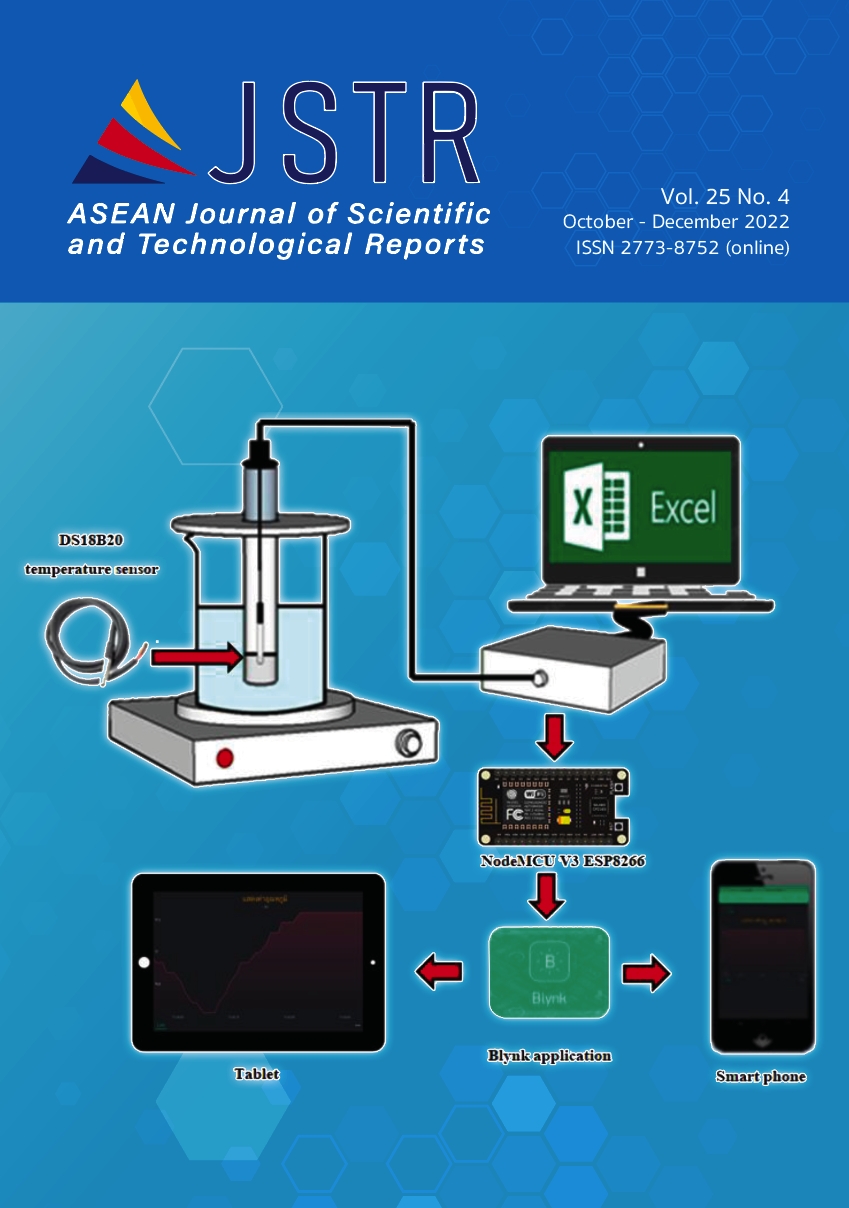An Experimental Set for Studying the Changing State of Matter with Smart Learning Media Displayed Through the IoT System for Smart-Lab
Main Article Content
Abstract
The purposes of this research were to develop and find the quality of the experimental set for studying the changing state of matter with smart learning media displayed through the IoT system. The data collection tools used in this research were 1) the accuracy percentage, 2) a suitability assessment form 3) a learning achievement test in “changing state of matter” and 4) satisfaction questionnaires. The statistics for analyzing the collected data were mean (), percentage, standard deviation (S.D.), and t-test dependent. The result showed that the Digital Thermo Sensor had 98.5% accuracy in 30 -100 compared with the standard thermometer. The experimental set was used to determine the melting points of pure substances, Naphthalene, Biphenyl, and water’s boiling point. The result found that the accuracy of melting point of Naphthalene and Biphenyl and the boiling point of water was 99.87, 99.75, and 99.99, respectively. The quality of the experimental set was also studied. Three experts evaluated the developed experiment set at a very good level. The experimental set successfully developed students’ understanding of a change of state concept. About 80% of students scored above the prescribed criterion of 70% of the total score. After learning, the scores of the students were higher than those before learning at a confidence level of 0.01. 30 grade-10 students evaluated the satisfaction evaluation at an excellent level. Therefore, the experimental set developed suitable for student learning in the topic of change of state effectively.
Article Details

This work is licensed under a Creative Commons Attribution-NonCommercial-NoDerivatives 4.0 International License.
References
Pinarbasi, T.; Canpolat, N. Students’ understanding of solution chemistry concepts. J Chem Educ 2003, 80(11), 1328-1332.
Cole, R.S.; Todd, J.B. Effect of web-based multimedia homework with immediate rich feedback on student learning in general chemistry. J Chem Educ 2003, 80(11), 1338-1343.
Gabel, D.L. Use of the Particle nature of matter in developing conceptual understanding. J Chem Educ 1993, 70(3), 193-194. 1993
Tang, H.; Abraham, A.R. Effect of computer simulations at the particulate and macroscopic levels on students’ understanding of the particulate nature of matter. J Chem Educ 2016, 93, 31-38.
Xie, C.; Li, C.; Ding, X.; Jiang, R; Sung, S. Chemistry on the cloud: From wet labs to web labs. J Chem Educ 2021, 98, 2840-2847.
Chomanee, J.; Wuttisamai, P.; Puntong, P.; Suakaew, P.; Katathikarnkul, S. Development of an apparatus for educational heat of reaction in chemical laboratory with digital thermal sensor and IoT on smartphone. TSU J 2020, 23(3), 70-78.
Tao, F.; Zhang, H.; Liu, A.; Nee, A.Y.C. Digital twin in industry: State-of-the-art. IEEE Trans Industr Inform 2019, 15(4), 2405-2415.
Sepasgozar, S.M.E. Digital twin and web-based virtual gaming technologies for online education: A Case of construction
management and engineering. Appl Sci 2020, 10(13), 4678.
Chanthamanee, P.; Jinda, P.; Prasitpong, S. Newton’s law of cooling experiment set using Arduino temperature sensor. J Phy: Conf Ser 2022
Steel, R.G.D.; Torrie, J.H. Principles and procedures of statistics: A biometrical approach; McGraw-Hill, New York, 1980.


